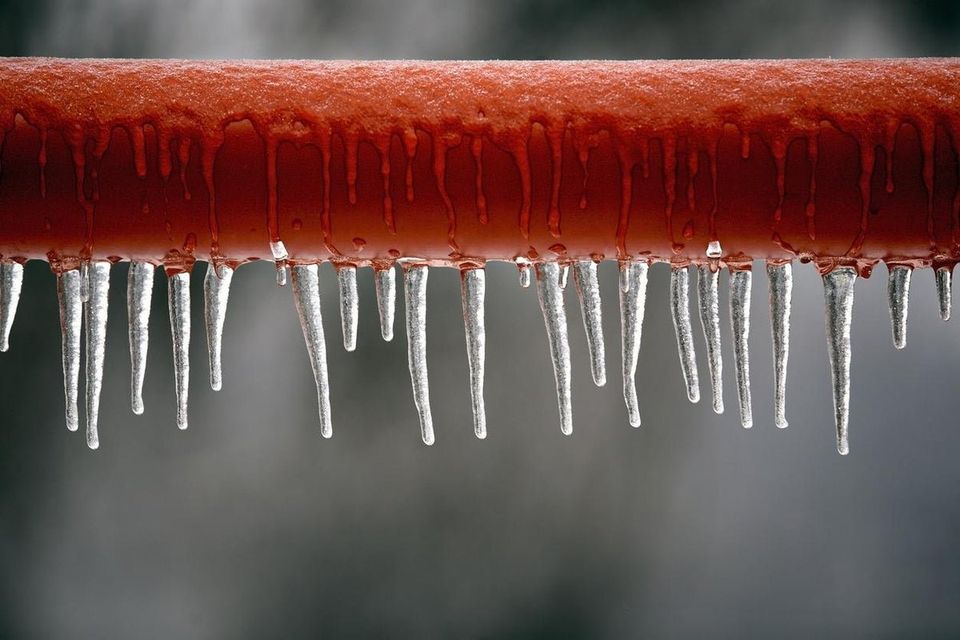Avoiding Frozen Plumbing in Winter: Key Strategies
Avoiding Frozen Plumbing in Winter: Key Strategies
Blog Article
How do you really feel in regards to Winter Plumbing Precautions: Preventing Frozen Pipes?

Cold weather can wreak havoc on your pipes, specifically by freezing pipes. Below's just how to avoid it from happening and what to do if it does.
Intro
As temperature levels decrease, the danger of icy pipelines rises, potentially bring about expensive repairs and water damage. Comprehending exactly how to avoid icy pipelines is critical for property owners in cold environments.
Avoidance Tips
Insulating vulnerable pipelines
Wrap pipelines in insulation sleeves or use heat tape to shield them from freezing temperatures. Focus on pipelines in unheated or exterior locations of the home.
Home heating techniques
Maintain interior areas appropriately heated, particularly locations with pipes. Open up cabinet doors to permit cozy air to circulate around pipes under sinks.
Exactly how to recognize frozen pipes
Look for reduced water circulation from taps, unusual smells or noises from pipelines, and noticeable frost on subjected pipes.
Long-Term Solutions
Structural modifications
Consider rerouting pipelines away from exterior wall surfaces or unheated locations. Include added insulation to attics, cellars, and crawl spaces.
Upgrading insulation
Invest in high-quality insulation for pipes, attics, and wall surfaces. Correct insulation assists keep constant temperature levels and lowers the threat of icy pipelines.
Securing Outdoor Pipes
Yard hose pipes and outdoor faucets
Detach and drain garden pipes before winter. Install frost-proof faucets or cover outdoor taps with protected caps.
Comprehending Frozen Pipelines
What creates pipes to ice up?
Pipelines freeze when exposed to temperature levels listed below 32 ° F (0 ° C) for prolonged durations. As water inside the pipes freezes, it broadens, taxing the pipe walls and potentially creating them to burst.
Risks and damages
Frozen pipelines can result in water supply interruptions, building damage, and pricey repair services. Burst pipelines can flood homes and trigger comprehensive architectural damages.
Indicators of Frozen Water Lines
Identifying frozen pipelines early can avoid them from breaking.
What to Do If Your Pipelines Freeze
Immediate actions to take
If you presume icy pipelines, maintain taps open up to eliminate stress as the ice melts. Utilize a hairdryer or towels taken in warm water to thaw pipes gradually.
Final thought
Protecting against icy pipes calls for aggressive procedures and fast reactions. By understanding the reasons, indications, and safety nets, homeowners can safeguard their plumbing during cold weather.
5 Ways to Prevent Frozen Pipes
Drain Outdoor Faucets and Disconnect Hoses
First, close the shut-off valve that controls the flow of water in the pipe to your outdoor faucet. Then, head outside to disconnect and drain your hose and open the outdoor faucet to allow the water to completely drain out of the line. Turn off the faucet when done. Finally, head back to the shut-off valve and drain the remaining water inside the pipe into a bucket or container. Additionally, if you have a home irrigation system, you should consider hiring an expert to clear the system of water each year.
Insulate Pipes
One of the best and most cost-effective methods for preventing frozen water pipes is to wrap your pipes with insulation. This is especially important for areas in your home that aren’t exposed to heat, such as an attic. We suggest using foam sleeves, which can typically be found at your local hardware store.
Keep Heat Running at 65
Your pipes are located inside your walls, and the temperature there is much colder than the rest of the house. To prevent your pipes from freezing, The Insurance Information Institute suggests that you keep your home heated to at least 65 degrees, even when traveling. You may want to invest in smart devices that can keep an eye on the temperature in your home while you’re away.
Leave Water Dripping
Moving water — even a small trickle — can prevent ice from forming inside your pipes. When freezing temps are imminent, start a drip of water from all faucets that serve exposed pipes. Leaving a few faucets running will also help relieve pressure inside the pipes and help prevent a rupture if the water inside freezes.
Open Cupboard Doors
Warm your kitchen and bathroom pipes by opening cupboards and vanities. You should also leave your interior doors ajar to help warm air circulate evenly throughout your home.

Hopefully you enjoyed reading our piece on How to prepare your home plumbing for winter weather. Thanks a lot for spending some time to read our short article. Are you aware of another individual who is serious about Winter Plumbing Precautions: Preventing Frozen Pipes? Please feel free to promote it. I value reading our article about Preventing and dealing with frozen pipes.
Call Today Report this page